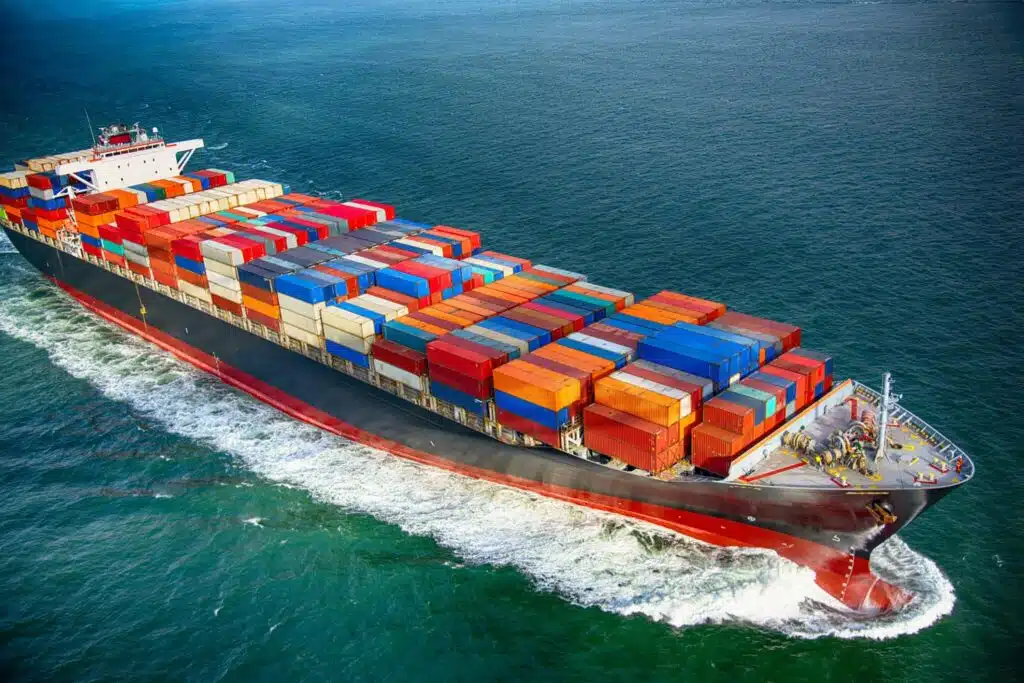Amidst a shipping recession, the Red Sea, a vital maritime corridor, is currently at the center of attention due to a surge in challenges faced by vessels transiting the region. Over the past weeks, Yemen-based Houthi militants have targeted commercial vessels, forcing shipping companies to alter routes and triggering a significant spike in freight rates. This unexpected turn of events raises questions about the potential impact on the shipping industry, which has been grappling with a recession. In this blog post, we will explore whether the challenges in the Red Sea could mark a reversal of fortunes for the industry and lead to a surge in freight rates.
Can Red Sea Challenges Trigger a Shipping Recession Reversal and Freight Rate Surge?
The attacks on vessels in the Red Sea by Houthi militants have prompted shipping companies to seek alternative routes, circumventing the troubled waters. This deviation, particularly the longer detours around the Cape of Good Hope in South Africa, has substantially increased ocean freight rates. Container ships, altering their courses to avoid the Red Sea, have redirected goods worth over $200 billion, causing freight rates to skyrocket by up to $10,000 per 40-foot container.
Even a U.S.-owned commercial vessel, the Gibraltar Eagle, fell victim to Houthi attacks, underscoring the severity of the situation. Industry experts speculate that these disruptions might bring about a positive shift in the shipping landscape, potentially ending the recession that plagued the industry in the previous year.
Alan Baer, CEO of logistics company OL USA, highlighted the potential impact on Vessel-Operating Common Carriers (VOCCs), such as Maersk, Evergreen, and COSCO. Baer suggested that if the challenges persist for three to six months, profits could gradually approach 2022 levels, with lower operating expenses than the chaos experienced in 2021 and 2022.
What is the Shipping Slump of 2023?
Before the Red Sea attacks, the global shipping industry faced a significant slump. High inventories and a pullback in consumer spending had led to several bankruptcies in the previous year. Global shipping container rates had more than halved from the boom’s peak that followed the pandemic.
The Asia-Europe rates, which averaged around $1,550 per FEU (40-foot equivalent unit) in 2023, have now more than doubled to over $3,500 per FEU. The abysmal rates, extending beyond shipping to also impact trucking, starkly contrasted with the profitability witnessed by container shipping companies in 2021 and 2022.
Container liner profitability, however, is anticipated to recover in the first quarter of 2023 with the recent spikes in freight rates. Jefferies raised the 2024 earnings forecasts for major shipping giants, including Maersk, Hapag Lloyd, and ZIM, citing higher utilization, increased capacity, and a tighter supply/demand balance resulting from vessel rerouting from the Red Sea.
ITS Logistics’ Paul Brashier expressed optimism, forecasting the end of the freight recession in the late third quarter of 2024.
Will Rates Climb Higher Amid Escalating Red Sea Tensions?
As tensions in the Red Sea escalate with military strikes by the U.S. and Britain against Houthi targets, and the rebels vow to respond, the possibility of rates slipping appears unlikely. Brashier suggested that both contracted and spot market rates may rise further, especially considering the contracted rates negotiated around January to March are locked in for the entire calendar year.
The upcoming Chinese Lunar New Year could also increase the rate as Asian businesses try to transport more freight before the holiday closure. However, some industry watchers remain cautious, emphasizing increased profitability’s dependence on the disruption’s duration.
Amrit Singh, Lead Shipping Analyst at LSEG, suggested that involvement by multinational navies, including the U.S. Navy, may deter further attacks on ships, potentially leading to a correction in freight rates. Operation Prosperity Guardian, launched by the U.S. in December, aims to protect trade in the key Red Sea waterway.
The container oversupply, resulting from a vessel buying spree by container lines, could pose a challenge—container lines, following record profits post-pandemic, faced overcapacity in 2023. Despite the obstacles, Rahul Kapoor, global head of shipping analytics and research at S&P Global, noted that the Red Sea developments are helping carriers absorb some of the excess capacity.
SupplyCaddy is Closely Monitoring the Situation
At SupplyCaddy, our dedication to equitable service extends beyond the scope of individual businesses. Regardless of whether you operate a single-unit restaurant or manage a large chain, we are committed to ensuring that every client receives the same level of attention and support. In light of the evolving challenges in the Red Sea, SupplyCaddy remains vigilant and proactive in understanding the potential impact on global shipping. We are actively engaged in continuous monitoring and analysis of the situation, allowing us to adapt swiftly to any developments that may affect the supply chain dynamics. Our goal is to keep our clients well-informed and provide tailored solutions to navigate these challenges seamlessly.
In conclusion, the challenges faced by vessels in the Red Sea have introduced significant disruptions to the shipping industry. While these challenges have led to a surge in freight rates, the ultimate impact of the shipping recession remains uncertain. The industry is at a critical juncture, with factors such as geopolitical tensions, oversupply of containers, and global economic conditions influencing its trajectory. As stakeholders closely watch the developments, the potential for a reversal in the shipping recession and a sustained surge in freight rates looms on the horizon.





















